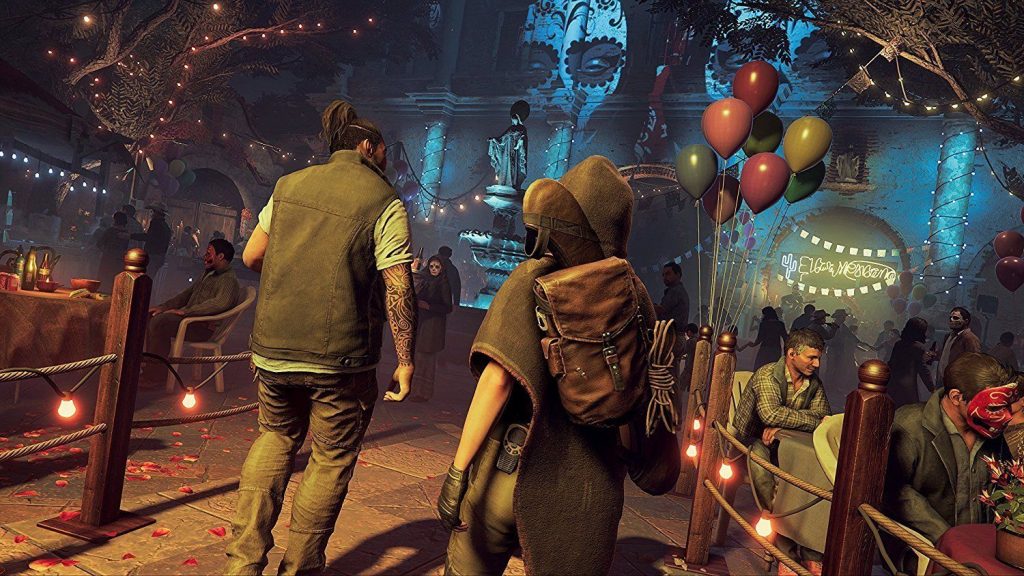Shadow of the Tomb Raider recently received a surprise update on PS5 to support 4K resolution at 60fps, but I won’t be returning to it. I have the utmost respect for Lara Croft’s reboot trilogy, but the finished product was an inconsistent journey for a character who never seemed to find herself.
Hopping between developers didn’t help, with Eidos Montreal concluding the trio of games while Crystal Dynamics fumbled about with Marvel’s Avengers. Even with this passing of the torch, the ludonarrative dissonance that defined this iteration of the legendary adventurer held her back from the very start. Rise of the Tomb Raider was the strongest of the three, and should be the series’ blueprint moving forward, but even that couldn’t pull itself away from a wider narrative drenched in cliche. I swear Lara spent the entire trilogy ‘becoming the Tomb Raider’, yet failed to carry so many of the lessons she learned over to each subsequent entry. She deserved so much better.
Related: The Owl House Is Right To Exist In A World Without Homophobia
In Shadow, she almost sets the apocalypse in motion and fails to realise the consequences of her own actions. Thousands of people die, and Lara is unable to comprehend that, in some way, she might be responsible. I can’t blame Camilla Luddington’s performance, since she’s excellent, but the writing team did the character dirty, failing to build upon a sense of momentum that Rise did such a phenomenal job of establishing. It was all wasted, and now any development Lara did experience hardly matters, since the next Tomb Raider game will somehow merge the pre-existing mythology with the most recent trilogy; something the reboot actively avoided.
Shadow of the Tomb Raider’s greatest flaw is its pacing. The initial reboot and Rise of the Tomb Raider managed to deliver an engaging campaign that combined chaotic firefights, Uncharted-esque set pieces, and exploration across a semi-open world in a way that always felt satisfying. You were frequently upgrading your gear and becoming a better raider while progressing further into a cliched yet engrossing story. Sure, I could see each ending coming from a mile away, but the moment-to-moment gameplay was engaging enough that I really didn’t care.
From the outset, Shadow makes all of the right decisions. Its opening is both ambitious and atmospheric, plunging Lara into an unfamiliar setting as we’re asked to navigate crowded city streets as The Day of the Dead unfolds all around us. Bringing back Jonah rather than Sam was an odd choice, but still – it’s a good setup. Sadly the festivities have to wait as we’re tasked with tracking down evildoers before they can obtain an ancient artefact and enact the apocalypse. Except that’s exactly what Lara does once she finds said artefact, with Jonah chastising her for making the wrong decisions and failing to comprehend the gravity of her actions. This sequence is incredibly effective, setting up the game’s dramatic stakes perfectly, yet it never capitalises on them again.
Once the opening fades to black, we’re whisked off to an ancient city where Lara is once again free to spill the tea with locals and pillage their ancient tombs in search of treasures and trinkets she can take home with her. Good ol’ Lara, gentrifying every single hidden civilization she comes across whether they like it or not. I’m being a little harsh, since tombs remain the game’s strongest asset. They’re better than ever here, acting as vast labyrinths filled with challenging puzzles and creative level design that doesn’t really surface in the city itself. Eidos Montreal clearly wanted to create a living, breathing hub world you return to again and again, but it often feels like an obtuse barrier to narrative progression that causes each and every big development to land with an underwhelming thump.
Combat encounters are weirdly infrequent, with puzzles and platforming taking up a significant portion of the opening hours alongside exploration throughout a city filled with uninspiring characters and some awful voice acting. Compared to its predecessors, the world Shadow of the Tomb Raider wants me to take interest in just isn’t that compelling. It’s empty and boring, with very little surrounding it to save things from mediocrity. The story explores Lara’s childhood to a heightened degree, but teases events of her past that are infinitely more interesting than anything Shadow has to offer.
Don’t tell me amazing tales of your past and force me to trudge through something so dull at the same time. This closing chapter is a product of what came before it, having to abide by the same needlessly grim tone and dedication to violence so it can maintain consistency. I’d love to see Lara wielding dual pistols and doing backflips over dinosaurs, but instead she’s choking faceless mercenaries to death and pulling off headshots. It’s a mixture that just doesn’t work, and my original playthrough was a chore to trudge through.
The next-gen upgrade has given Shadow of the Tomb Raider a nice visual boost, but it will only serve to highlight how underwhelming the entire package really is. The ending teases an exciting future for Lara Croft – even more so in the cut version, which included a letter from iconic character Natla. I just hope they build on this iteration of the character and start moving in the right direction. Bring back dinosaurs, delve into the past, or indulge in the fantastical a little more – not everything needs to be so dour and serious.
Next: Halo Infinite Already Feels Like The Perfect Mixture Of Old And New
